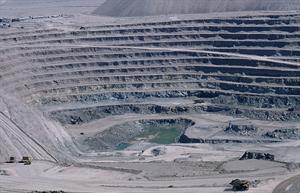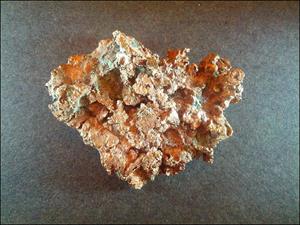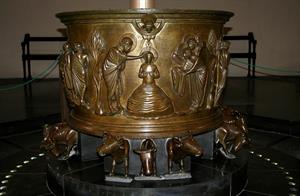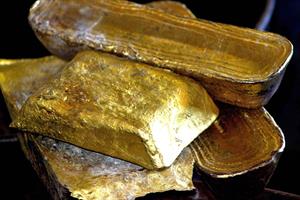Copper History
Author : Admin Posted Date : 12/16/2016 7:01:41 PM

Copper Age
Copper occurs naturally as native metallic copper and was known to some of the oldest civilizations on record. The history of copper use is at least 11,000 years old, estimated to have begun in 9000 BC in the Middle East; a copper pendant was found in northern Iraq that dates to 8700 BC. Evidence suggests that gold and meteoric iron (but not iron smelting) were the only metals used by humans before copper. The history of copper metallurgy is thought to follow this sequence: 1) cold working of native copper, 2) annealing, 3) smelting, and 4) the lost wax casting. In southeastern Anatolia, all four of these techniques appear more or less simultaneously at the beginning of the Neolithic c. 7500 BC.
Just as agriculture was independently invented in several parts of the world, copper smelting was independently invented in different places. It was probably discovered in China before 2800 BC, in Central America perhaps around 600 AD, and in West Africa about the 9th or 10th century AD. Investment casting was invented in 4500–4000 BC in Southeast Asia and carbon dating has established mining at Alderley Edge in Cheshire, UK at 2280 to 1890 BC. Ötzi the Iceman, a male dated from 3300–3200 BC, was found with an axe with a copper head 99.7% pure; high levels of arsenic in his hair suggest his involvement in copper smelting. Experience with copper has assisted the development of other metals; in particular, copper smelting led to the discovery of iron smelting. Production in the Old Copper Complex in Michigan and Wisconsin is dated between 6000 and 3000 BC. Natural bronze, a type of copper made from ores rich in silicon, arsenic, and (rarely) tin, came into general use in the Balkans around 5500 BC.
Bronze Age
Alloying copper with tin to make bronze was first practiced about 4000 years after the discovery of copper smelting, and about 2000 years after "natural bronze" had come into general use. Bronze artifacts from the Vinča culture date to 4500 BC. Sumerian and Egyptian artifacts of copper and bronze alloys date to 3000 BC. The Bronze Age began in Southeastern Europe around 3700–3300 BC, in Northwestern Europe about 2500 BC. It ended with the beginning of the Iron Age, 2000–1000 BC in the Near East, and 600 BC in Northern Europe. The transition between the Neolithic period and the Bronze Age was formerly termed the Chalcolithic period (copper-stone), when copper tools were used with stone tools. The term has gradually fallen out of favor because in some parts of the world, the Chalcolithic and Neolithic are coterminous at both ends. Brass, an alloy of copper and zinc, is of much more recent origin. It was known to the Greeks, but became a significant supplement to bronze during the Roman Empire.
Antiquity and Middle Ages
In Greece, copper was known by the name chalkos (χαλκός). It was an important resource for the Romans, Greeks and other ancient peoples. In Roman times, it was known as aes Cyprium, aes being the generic Latin term for copper alloys and Cyprium from Cyprus, where much copper was mined. The phrase was simplified to cuprum, hence the English copper. Aphrodite (Venus in Rome) represented copper in mythology and alchemy because of its lustrous beauty and its ancient use in producing mirrors; Cyprus was sacred to the goddess. The seven heavenly bodies known to the ancients were associated with the seven metals known in antiquity, and Venus was assigned to copper.
Britain first used brass in about the 3rd or 2nd Century BC. In North America, copper mining began with marginal workings by Native Americans. Native copper is known to have been extracted from sites on Isle Royale with primitive stone tools between 800 and 1600. Copper metallurgy was flourishing in South America, particularly in Peru around 1000 AD. Copper burial ornamentals from the 15th century have been uncovered, but the metal's commercial production did not start until the early 20th century.
The cultural role of copper has been important, particularly in currency. Romans in the 6th through 3rd centuries BC used copper lumps as money. At first, the copper itself was valued, but gradually the shape and look of the copper became more important. Julius Caesar had his own coins made from brass, while Octavianus Augustus Caesar's coins were made from Cu-Pb-Sn alloys. With an estimated annual output of around 15,000 t, Roman copper mining and smelting activities reached a scale unsurpassed until the time of the Industrial Revolution; the provinces most intensely mined were those of Hispania, Cyprus and in Central Europe.
The gates of the Temple of Jerusalem used Corinthian bronze treated with depletion gilding. The process was most prevalent in Alexandria, where alchemy is thought to have begun. In ancient India, copper was used in the holistic medical science Ayurveda for surgical instruments and other medical equipment. Ancient Egyptians (~2400 BC) used copper for sterilizing wounds and drinking water, and later to treat headaches, burns, and itching.
Modern Periad
The Great Copper Mountain was a mine in Falun, Sweden, that operated from the 10th century to 1992. It satisfied two thirds of Europe's copper consumption in the 17th century and helped fund many of Sweden's wars during that time. It was referred to as the nation's treasury; Sweden had a copper backed currency.
Copper was used in roofing, currency, Renaissance sculpture, photographic technology known as the daguerreotype, the Statue of Liberty, and other structures. Copper plating and copper sheathing was widely used to protect the under-water hulls of ships, a technique pioneered by the British Admiralty in the 18th century. The Norddeutsche Affinerie in Hamburg was the first modern electroplating plant starting its production in 1876. The German scientist Gottfried Osann invented powder metallurgy in 1830 while determining the metal's atomic mass; around then it was discovered that the amount and type of alloying element (e.g., tin) to copper would affect bell tones. Flash smelting was developed by Outokumpu in Finland and first applied at Harjavalta in 1949; the energy-efficient process accounts for 50% of the world's primary copper production.
The Intergovernmental Council of Copper Exporting Countries, formed in 1967 by Chile, Peru, Zaire and Zambia, operated in the copper market as OPEC does in oil, though it never achieved the same influence, particularly because the second-largest producer, the United States, was never a member; it was dissolved in 1988.








